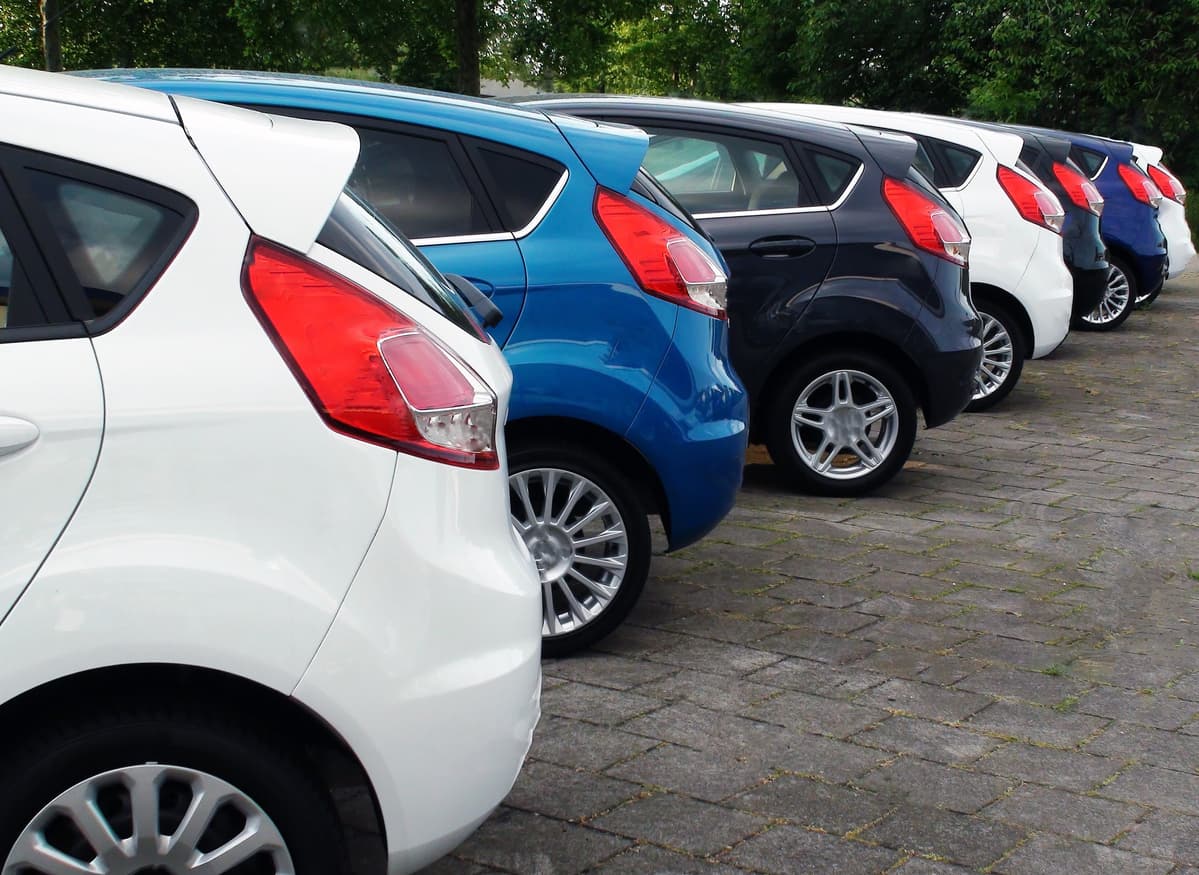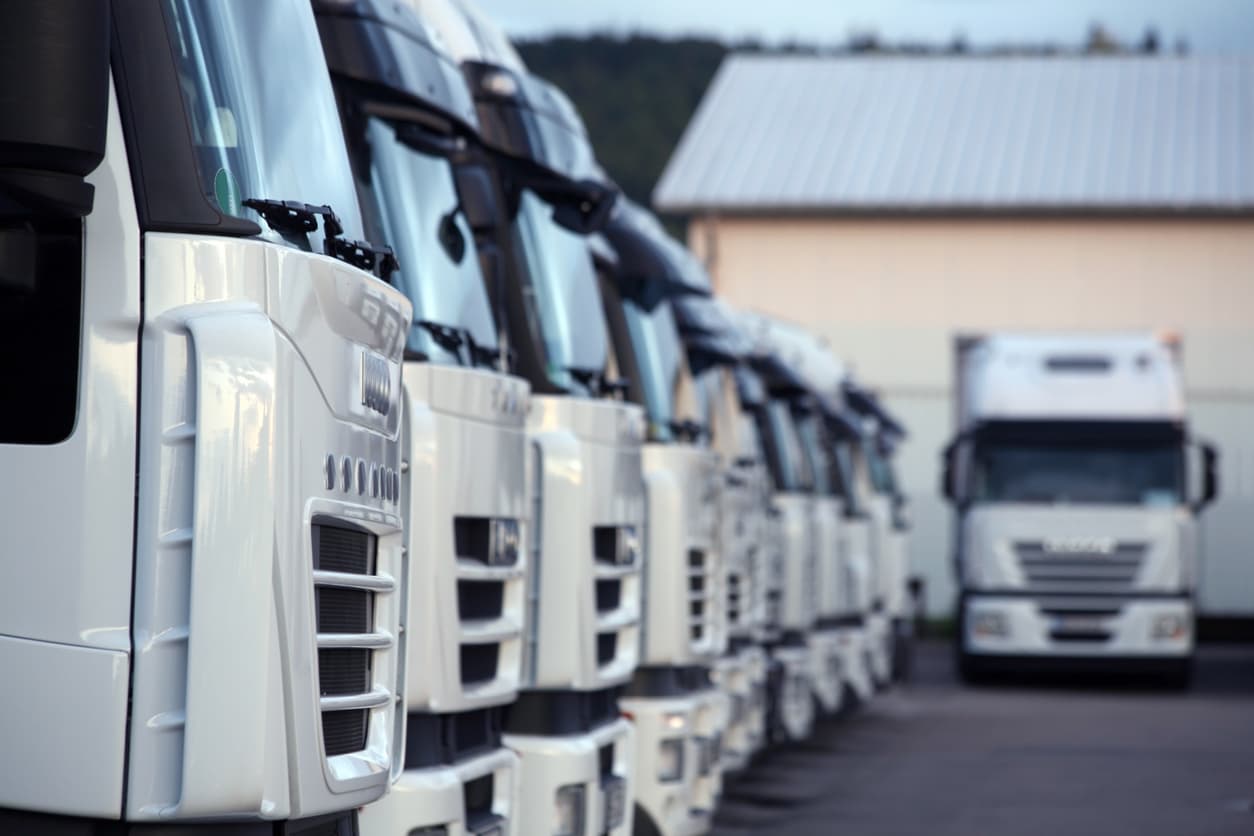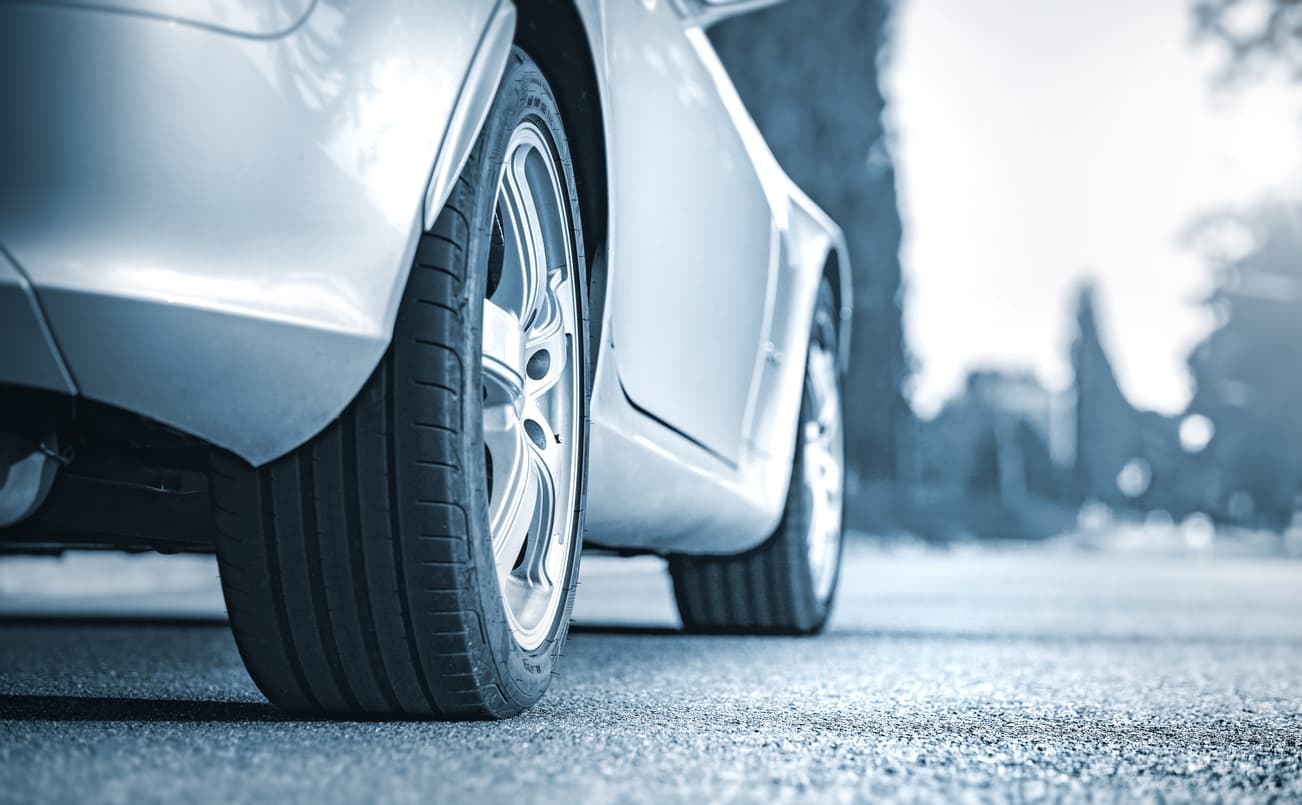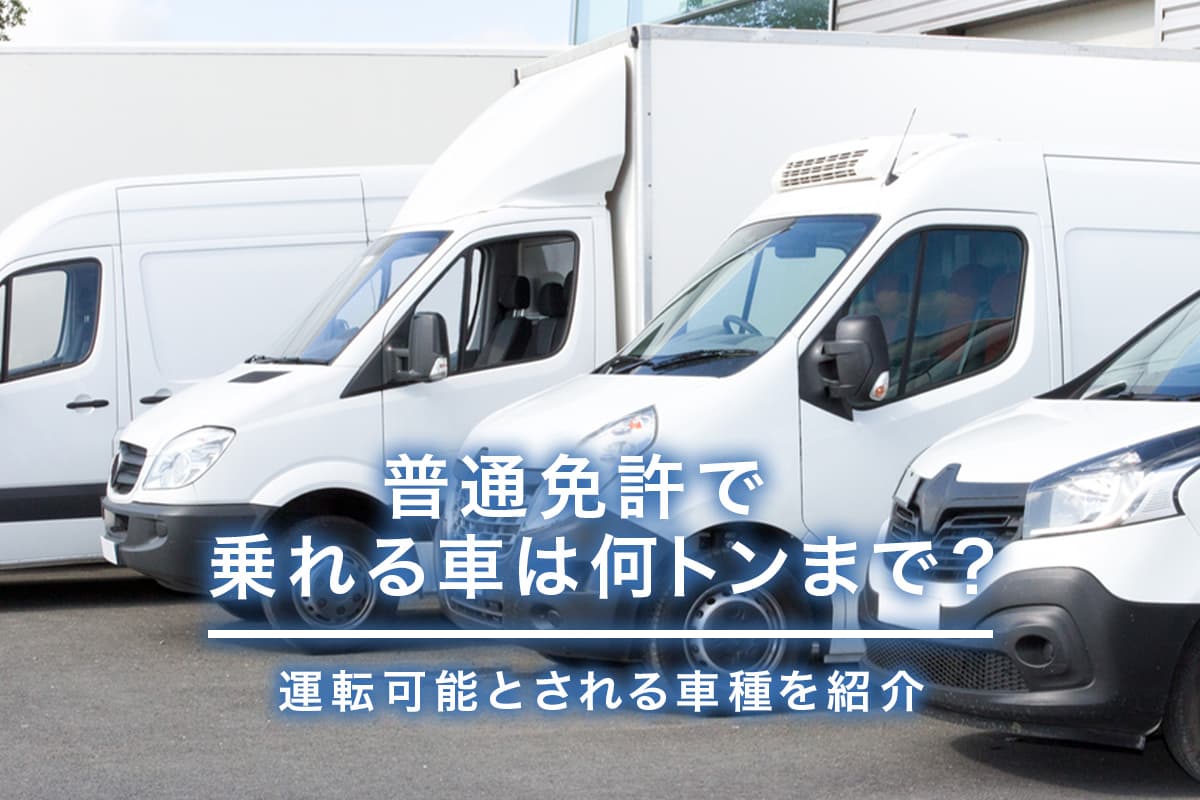自動車免許にはさまざまな種類があり、免許の種類ごとに乗れる車両は定められています。乗用車に乗るために取られることの多い普通免許では、どのような車両に乗れるのでしょうか。
「普通免許ならトラックも乗れる」と思う人もいるかもしれませんが、必ずしもそうではありません。近年の改正により運転できる車両の制限が変わっています。普通免許で乗れる車両の種類を、免許の取得タイミングを踏まえたうえで把握していきましょう。
目次
普通免許で乗れる車両の種類
 まずは、普通免許をもつすべての人が乗ることのできる車両の種類を把握していきましょう。対象の車両は次の3種類です。
まずは、普通免許をもつすべての人が乗ることのできる車両の種類を把握していきましょう。対象の車両は次の3種類です。
- 普通自動車
- 小型特殊自動車
- 原動機付自転車
これらの車両は、2023年1月現在では免許の取得タイミングに関わらず許可されています。それぞれの車両が、厳密には何を指すのかを見ていきましょう。
普通自動車
普通自動車は、車両総重量が3.5トン未満、最大積載量が2トン未満、乗車定員が10人以下の条件を全て満たす自動車であると定義されています。一般的に乗用に用いられる自動車は、この普通自動車に分類されていることが多いです。
普通自動車にはAT車(オートマチック車)とMT車(マニュアル車)の2つの種類が存在します。MT車はAT車に比べて比較的運転難度が高いとされ、免許の取得時にはAT限定免許かそうでないかの2択を選びます。
普通免許がAT限定のときには、あらためて自動車教習所でAT限定解除のための講習を受けるか、運転免許試験場で技能審査を受けて限定解除を受けない限りMT車に乗れません。
また、タクシーや運転代行などの旅客輸送目的の業務をおこなう普通自動車を運転する際には、普通二種免許が必須です。客を乗せて運ばない限り、普通自動車には通常の普通免許で乗ることはできます。二種免許を持っていても、緑ナンバー(一般貨物自動車運送事業許可を受けたナンバー)のないタクシー(白タク)として道路運送法違反となります。
小型特殊自動車
小型特殊自動車(小型特殊)は、雪かきに使用する除雪車、農作業に用いるトラクターやコンバイン、工場などで使われるフォークリフトなどの小型の車両を指します。これらの車両は普通免許を持っていることで公道での運転が可能です。
性能面では、車両の長さが4.7m以下、車両の幅が1.7m以下、車両の高さが2m以下(ヘッドガード部分に限り2.8m以下)、最高速度が時速15㎞以下の車両を小型特殊として定義しています。
しかし、小型特殊に分類される車両のうち、小型フォークリフトは労働安全衛生法が管轄するフォークリフト資格(フォークリフト技能講習修了証)を取る必要があります。大型のフォークリフトは大型特殊免許が必要なケースがあります。
また、新小型特殊自動車に分類される車両には大型特殊免許が必要となるため、普通免許は許可の対象外となります。
原動機付自転車
原動機付自転車(原付)は、排気量50cc以下のエンジン(原動機)を備えた2輪車で、オートバイの一種です。また、0.6kW以下のモーター定格出力を持つ電動バイク(電動スクーター)も原付と同じルールが適用されます。
原付は他のオートバイと違い、最高速度が時速30kmに制限されていることが特徴的です。また、右折の際には交差点の側端に沿って曲がる二段階右折が求められるなどの原付ならではのルールにも従わなければなりません。
普通免許における原付の許可はあくまで原付に限られたものであり、他のオートバイに乗ることはできません。排気量51cc以上のオートバイは対象外となっているため、注意が必要です。
普通免許で乗れるトラックは何トンまで?

普通免許ではトラック(貨物自動車)に乗れますが、普通免許の取得タイミングにより乗れるトラックの種類に制限があるため注意が必要です。
普通免許で乗れる対象が切り替わる取得タイミングは、次の3つです。
- 平成19年(2007年)6月1日まで
- 平成29年(2017年)3月11日まで
- 平成29年(2017年)3月12日以降
トラックの運転を考えているときには、自分がいつ免許を得たのかを最初に確認することが大切です。
平成19年(2007年)6月1日までに取得した場合
普通免許の取得タイミングが平成19年(2007年)6月1日以前である人は、次の条件を満たした対象のトラックに乗ることを許可されます。
| 車両総重量 | 最大積載量 | 乗車定員数 |
| 8トン未満 | 5トン未満 | 10人以下 |
このタイミングまでは免許区分が普通免許と大型免許の2種類に大別されていましたが、普通免許の範囲内における貨物車の事故の増加や車体の大型化が問題となっていた背景から見直しを受けています。
結果、2007年の道路交通法の法改正が大きな契機となって、許可されるトラックの対象範囲が変わることになりました。
平成29年(2017年)3月11日までに取得した場合
普通免許の取得タイミングが平成29年(2017年)3月11日以前である人は、次の条件を満たした対象のトラックに乗ることを許可されます。
| 車両総重量 | 最大積載量 | 乗車定員数 |
| 5トン未満 | 3トン未満 | 10人以下 |
2007年の改正で中型自動車が定義され、同時に中型自動車免許も新設されたため、運転可能な対象の範囲は狭まっています。
平成29年(2017年)3月12日以降に取得した場合
普通免許の取得タイミングが平成29年(2017年)3月12日以降である人は、次の条件を満たした対象のトラックに乗ることを許可されます。
| 車両総重量 | 最大積載量 | 乗車定員数 |
| 3.5トン未満 | 2トン未満 | 10人以下 |
普通免許と中型免許の間に準中型免許が新設されたため、運転可能な対象はさらに狭まりました。最新の改正は2017年のものであるため、これが現行の免許区分となります。
普通免許で乗れない車を運転した場合に受ける処分

通常は免許で許可されていない車両を運転すると、無免許運転として罰せられますが、免許条件違反とされる場合もあります。どちらも違反運転ではあるものの、その違反点数や罰則内容については大きな差があります。免許条件違反が2点の違反点数である一方、無免許運転は25点となっています。
罰則の重さは違うものの、違法行為には変わりありません。自分のドライバーとしての経歴に傷をつけないように、それぞれの違反の要件やケースごとの処置について見ていきましょう。
【平成29年3月11日までに取得している場合】無免許運転にならず罰則を受けない
免許条件違反と無免許運転の処置は、平成29年3月11日までに普通免許を得ているか、していないかで変わる場合があります。変化の対象となるのは、普通免許が対象とする範疇が変動する準中型から大型の車両です。
平成19年6月1日以前に得た人は、車両総重量5.0トン以上の準中型車を運転したときに免許条件違反が科せられます。
平成29年3月11日までに得た人は、車両総重量8.0トン以上の中型車を運転したときや、乗車定員11人以上の中型車を運転したときに免許条件違反となります。
【平成29年3月12日以降に取得している場合】無免許運転となり罰則を受ける
平成29年3月12日以降に得た人が、免許区分外の車を運転すると、免許条件違反ではなく、道路交通法第64条に基づき無免許運転として扱われます。
普通免許が対象とするトラックで紹介した通り、この条件が許可されている車両は車両総重量が3.5トン未満、最大積載量が2トン未満、乗車定員数が10人以下の車両です。これを超える車両は無免許運転の対象となります。
無免許運転を行うと、次の処分を科せられる可能性があります。
- 違反点数25点の付与
- 2年以上の運転免許取り消し
- 3年以下の懲役、または50万円以下の罰金(道路交通法第117条の2の2)
違反として検挙される前に自分の運転区分を把握しておくことが重要です。自分が運転できる車両の対象に不安があるときには、免許センターや警察に確認を取ることが大切です。
一定の大きさの車を運転するには別の免許が必要

いずれの取得タイミングにおいても、普通自動車で運転可能なものは限られています。対象外の車両を運転したいときは、それぞれに必要な免許を取得する必要があります。
準中型免許を取得する
普通免許と中型免許の中間である準中型免許の取得で、次の性能の車両に乗れます。
| 車両総重量 | 最大積載量 | 乗車定員数 |
| 3.5~7.5トン未満 | 2~4.5トン未満 | 10人以下 |
準中型免許は、平成29年3月12日に新しく設けられた区分の免許です。準中型免許は中型免許や大型免許と違い、満18歳以上であれば、普通免許を持っていない人でも取得できます。
年齢や普通自動車の経験年数が問われないため、比較的取りやすい免許であると言えるでしょう。実際、準中型免許の設立で、運送業界からは人手不足が解決することを期待されています。
中型免許を取得する
準中型自動車免許より大きい車両を運転するためには、中型免許を得る必要があります。中型免許を取得すると、次の性能を持つ車両に乗れます。
| 車両総重量 | 最大積載量 | 乗車定員数 |
| 7.5~11トン未満 | 4.5~6.5トン未満 | 11~29人以下 |
中型免許は、平成19年6月2日に設けられた区分の免許です。取得条件は準中型免許よりも厳しく、満20歳以上かつ普通免許を保有した期間が停止期間を除いて2年以上である人でなければ免許を受けられません。
中型自動車は大型トラックや路線バス、観光バスよりは小さいですが、乗用車に用いられる普通自動車と比較したときにははるかに大型です。4トントラックや6トントラック、マイクロバスを対象とします。専門的な仕事用として必要とされることの多い免許であるため、難易度は高めであると言えるでしょう。
マイクロバスなどの旅客目的の業務で輸送を行う際には、加えて中型二種の免許を得なければならないことに注意が必要です。
中型二種の取得は通常の中型免許(中型一種)と異なり、普通免許、中型免許、大型免許、大型特殊免許のいずれかを3年以上の保有(停止期間を含まない)している人が対象となっています。
大型免許を取得する
中型自動車よりも大きい車両を運転するためには、大型免許を取得する必要があります。大型免許を受けることで、次の性能を持つ車両に乗れます。
| 車両総重量 | 最大積載量 | 乗車定員数 |
| 11トン以上 | 6.5トン以上 | 30人以上 |
車体が大きく、機敏な運転をおこなうことが難しいため、条件は中型自動車よりも厳しくなっています。年齢は満21歳以上、普通免許・準中型免許・中型免許・大型特殊免許のうち、3年以上の停止期間を含まない運転歴を持っていることが取得の条件となります。
大型免許はバスやトラック、トレーラーなどの輸送車に加え、ダンプカーやタンクローリー、ミキサー車などの工事関連車両の運転に必要です。危険物などを運搬する際にはあわせて危険物取扱者の資格も求められます。
中型自動車と同様、路線バスや観光バスなどの旅客目的の業務輸送の際には、大型二種免許が必要となることに意識が必要です。こちらも普通免許、中型免許、大型免許、大型特殊免許のいずれかを3年以上の保有(停止期間含まず)が条件となっています。
また、フォークリフトやクレーンなどの特殊な大型車両の運転には大型特殊免許が必要です。これはあくまで運転の許可であるため、フォークリフトならばフォークリフト関係の資格、クレーンにはクレーン関係の資格が別途必要となることを意識しましょう。
普通免許で確認しておきたいこと

運転免許は厳格な法律のもとで運用されているものであるため、何気ない日常のなかでの使用でもさまざまなことに注意しなければなりません。
この項目では、普通免許に関して確認しておきたいポイントを紹介します。
荷物を乗せるときは積載可能重量を計算する
業務輸送に使用されることの多い準中型以上車両とは違い、普通自動車には最大積載量の法的な定めが存在していません。ならば無制限に荷物を乗せられるのか、というと、それも異なります。
安全な運転のためには、自動車に積載可能な重量を把握しておくことが重要です。「そんなに重い荷物を運ぶ機会はない」と思っても、キャンプや旅行などで荷物が多いときには注意が必要な重量に迫ることもあります。
積載可能重量は、以下の計算式で求められます。
(車両総重量)ー(車両重量+乗車人数×1人分の体重)
車両総重量が1300㎏(1.3トン)、車両重量が1000㎏(1.0トン)、最大乗車定員数が4人の普通自動車に55kgの人間が3人が乗り込むと仮定すると、次の通りに求められます
(1300kg)ー(1000kg+3×55kg)=135kg
この例においては、最大135kgの積載が目安となります。重い荷物を運ぶときには、事前に計算をおこない、車の限界を超えた輸送を避けましょう。車内で重さが偏ると運転性能にも影響が出るため、荷物の積み方にも注意が必要です。
自動二輪車は運転できない
小型自動二輪車以上のバイクの運転は、無免許運転となります。
小型自動二輪車以上のオートバイは時速60kmでの走行ができ、二段階右折が禁止されているなど、原付とは大きく異なる環境を持っています。そのためオートバイの車種に応じた運転免許を受ける必要があります。
排気量が50ccを超えると、法律における分類は原動機付自転車ではなく小型自動二輪車とされるため、原付よりも規模の大きいオートバイに乗りたい人は普通自動二輪車免許や、大型自動二輪車免許を得るようにしましょう。普通自動二輪車免許にも125ccまでのオートバイは小型限定免許での運転が可能など、詳細な条件が異なります。乗りたいオートバイに合った免許はどれかを把握することが大切です。
普通免許で何トンまで運転できるのかを確認しておこう

普通免許は平成19年6月1日以前の取得、平成29年3月11日以前の取得、平成29年3月12日以降の取得でその扱いが大きく異なります。トラックなどの対象の車両を運転する際には、まずは自分の取得タイミングを確認することが大切です。
免許の対象外の車両を運転すると法律に反しますが、その罰則内容も平成29年3月11日を境に大きく変わります。無免許運転として検挙されると重大な罰則を科せられます。また免許条件違反も法律違反のため、同様の注意が必要です。
対象外の車両を運転する際には、車両に応じた免許を改めて取得しましょう。準中型車には準中型免許、中型車には中型免許、大型車には大型免許と、車種が大型化するにつれ取得や運転の難易度は上がることも把握しておきましょう。







